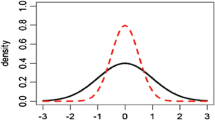Abstract
This article examines the United States Pharmacopeia (USP) and its role in assessing the equivalence and inequivalence of biological and biotechnological drug substances and products—a role USP has played since its founding in 1820. A public monograph in theUnited States Pharmacopeia-National Formulary helps practitioners and other interested parties understand how an article’s strenght, quality, and purity should be controlled. Such a monograph is a standard to which all manufactured ingredients and products should conform, and it is a starting point for subsequent-entry manufactures, recognizing that substantial additional one-time characterization studies may be needed to document equivalence. Review of these studies is the province of the regulatory agency, but compendial tests can provide clarity and guidance in the process.
Similar content being viewed by others
References
USP. About USP—an overview. Available at: www.usp.org/aboutUSP/.Accessed October 10, 2005.
Board of Trustees, United States Pharmacopeial Convention.United States Pharmacopeial Convention Quinquennial Meeting 2000 Proceedings. Rockville, Maryland: United States Pharmacopeial Convention; 2000:400.
USP. Biological and Biotechnological Drug Substances and Products Workbook; November 18–21, 2003; Crystal City, VA. 2003.
World Health Organization.Consultation on International Biological Standards for In Vitro Diagnostic Procedures, Blood Safety, and Clinical Technology. Geneva, Switzerland: World Health Organization; 2000.
Federal Food, Drug, and Cosmetics Act, 21USC § 321(g).
United States Public Health Service Act, 42USC § 262(i).
National Biological Standards Board.Biological Standards Act. London, UK: The Stationer’s Office; 1975.
TheBioPharm Lexicon.BioPharm. 2002;15(suppl).
Office of the Special Assistant for Gulf War Illnesses. Observations TABA—acronyms, abbreviations, and glossary. GulfLINK Web site. Available at: www.gulflink.osd.mil/va/va_taba.htm. Accessed October 10, 2005.
The Pharmacopoeia of the United States of America. Boston, MA: Fells and Lilly, 1820.
WHO Expert Committee on Specifications for Pharmaceutical Preparations, ed. Annex 11: Guidance on the selection of comparator pharmaceutical products for equivalence assessment of interchangeable multisource (generic) products. In:Thirty-Fourth Report. Geneva, Switzerland: World Health Organization; 1999.
Williams RL, Chen ML, Hauck WW. Equivalence approaches.Clin Pharmacol Ther. 2002;72:229–237.
Food and Drug Administration Modernization Act of 1997. 21USC 301 § 116.
ICH. International Conference on Harmonization Q5E guideline: comparability of biotechnological/biological products subject to changes in their manufacturing process. Available at: www.ich.org/cache/compo/276-254-1.html. Accessed October 10, 2005.
FDA Center for Drug Evaluation and Research and Center for Biologics Evaluation and Research. Guidance for industry: premarketing risk assessment. Available at: www.fda.gov/cber/gdlns/premarkrisk.pdf. Accessed October 10, 2005.
FDA Center for Drug Evaluation and Research and Center for Biologics Evaluation and Research. Guidance for industry: development and use of risk-minimization action plans. Available at: www.fda.gov/cber/gdlns/riskminim.pdf. Accessed October 10, 2005.
Task Force on Risk Managment. Managing the risks from medical product use: creating a risk management framework. Available at: http://www.fda.gov/oc/tfrm/riskmanagement.html. Accessed October 10, 2005.
Committee for Proprietary Medicinal Products.Guideline on Comparability of Medicinal Products Containing Biotechnology-Derived Proteins as Active Substance: Quality Issues. London, England: European Medicines Evaluation Agency; 2003.
Schuirmann DJ. A comparison of the two one-sided tests procedure and the power approach for assessing the equivalence of average bioavailability.J Pharmacokinet Biopharm. 1987;15:657–680.
FDA. Guidance for industry: statistical approaches to estabilishing bioequivalence. Available at: www.fda.gov/cder/guidance/3616fnl.htm. Accessed October 10, 2005.
USP Open Presentations of Violand B, Workman W, Hardy M, Mulkerrin M, Davis G, Mire-Sluis A, Cavagnaro J, Rogge M, Balthasar J, Swanson S, Hauck W. Conference on Biological and Biotechnological Drug Substances and Products. November 18–21, 2003; Arlington, VA.
Mire-Sluis AR, Das RG, Padilla A. WHO cytokine standardization: facilitating the development of cytokines in research, diagnosis, and as therapeutic agents.J Immunol Methods. 1998;216:103–116.
Mire-Sluis AR, Padilla A, Das RG. Biological standardization of cytokines and growth factors.Dev Biol Stand. 1999;97:171–176.
Hauck WW, Capen RC, Callahan JD, et al. Assessing parallelism prior to determining relative potency.PDA J Pharm Sci Technol. 2005;59:127–137.
ICH. E10 guideline, Choice of control group in clinical trials. Available at: www.ich.org/MediaServer.jser?@_ID=486&@_MODE=GLB. Accessed October 11, 2005.
Copmann T, Davis G, Garnick R, et al. One product, one process, one set of specifications.Pharm Technol. 2001;25:26–36.
ICH. Q6B Guideline, Specifications: test procedures and acceptance criteria for biotechnological/biological products. Available at: www.ich.org/MediaServer.jser?@_ID=432&@_MODE=GLB. Accessed October 11, 2005.
Anon. Clearer paradigm sought for biopharmaceutical specifications:Gold Sheet. 2004;38:1–32.
Author information
Authors and Affiliations
Corresponding author
Additional information
Published: November 17, 2005
Rights and permissions
About this article
Cite this article
Bhattycharyya, L., Dabbah, R., Hauck, W. et al. Equivalence studies for complex active ingredients and dosage forms. AAPS J 7, 77 (2005). https://doi.org/10.1208/aapsj070477
Received:
Accepted:
DOI: https://doi.org/10.1208/aapsj070477




